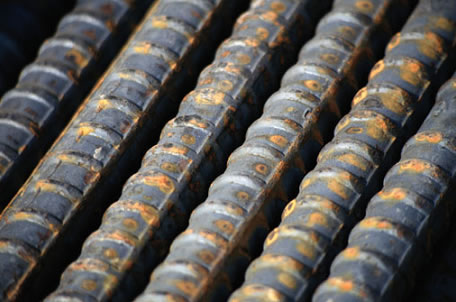CONCRETE BENEFITS OVER TIN SHEDS
2nd March 2015

With one in five warehouses in England expected to have a major fire every year, the UKs preponderance for the ubiquitous lightweight steel shed over the innate fire resistance of concrete construction must be questioned believes Steve Elliott, Chairman of the British Association of Reinforcement.
Research carried out by BRE Global estimate that every year 621 warehouse premises in England will have a fire requiring the attendance of fire fighters at an annual cost to the UK economy of ?232 million. Other research by BRE found that warehouse fires usually spread very quickly. A fire can reach the top of a 10m high racking bay in as little as two minutes and typically a local fire brigade can take up to 20 minutes before being operational on site by which time it is unlikely that the blaze cannot be controlled or the building and contents saved.
The impact of warehouse fires is underlined by a number of high profile fires that occurred last year. In January 2014, the Libherr warehouse in Newport Pagnell was completely destroyed by fire. In April 2014, a fire at the Tradpak Recycling warehouse in Leeds needed 100 firefighters to bring the blaze under control. Whilst last summer saw the fire at the Asos distribution centre in Barnsley cost the company over ?22 million in loss of stock. In February this year, up to 100 firefighters were required to tackle a blaze at a storage warehouse in Eirth, south-east London. Two adjacent units and three lorries were also damaged.
With warehouses and distribution centres storing highly flammable products and materials, the predominance of the steel shed in the UK is unusual compared to other countries that tend to construct such buildings with concrete. Concrete offers inherent fire resistance, without the need for additional materials, of up to four hours, far longer than the 30 minutes requirement stipulated by the Building Regulations. This high level of resistance and resultant structural integrity is welcomed by firefighters who often have to enter burning buildings. It is also welcomed by building occupiers wanting a quick return to business-as-usual rather than their premises having to be demolished and rebuilt.
There are a number of concrete construction options including reinforced in-situ concrete formwork solutions such as high wall shuttering, hybrid construction comprising of twinwalls with precast outer skins and an internal core of in-situ concrete and tilt-up in-situ concrete panels that are cast horizontally on site and then tilted into position. A further straightforward design and construction approach is concrete load-bearing walls with a lightweight roof. The load-bearing walls can be propped or cantilevered. Both will carry the vertical load and provide the necessary longitudinal bracing. Neither have instructive column instands, which can account for up to 5 per cent of space in portal steel frame sheds. The roof construction is simplified as the roof beams are simply supported by the walls.
In addition to inherent fire resistance, concrete construction offers flood resilience, better thermal efficiency and enhanced robustness and security. Given the ready availability of concrete construction options and the wide of range free, built-in performance benefits the ubiquity of the tin shed really does need to be challenged.

